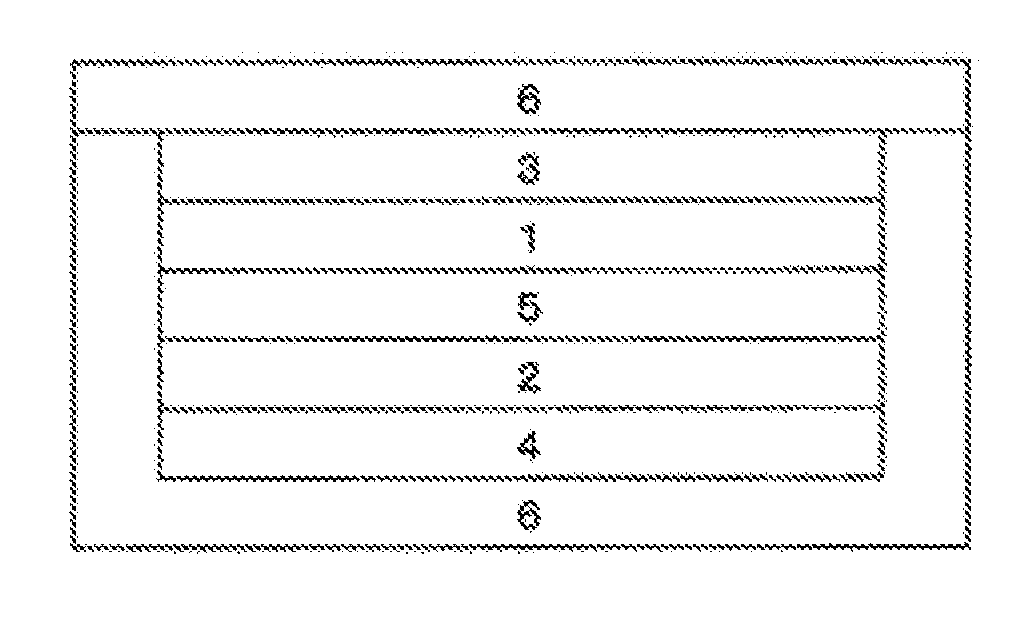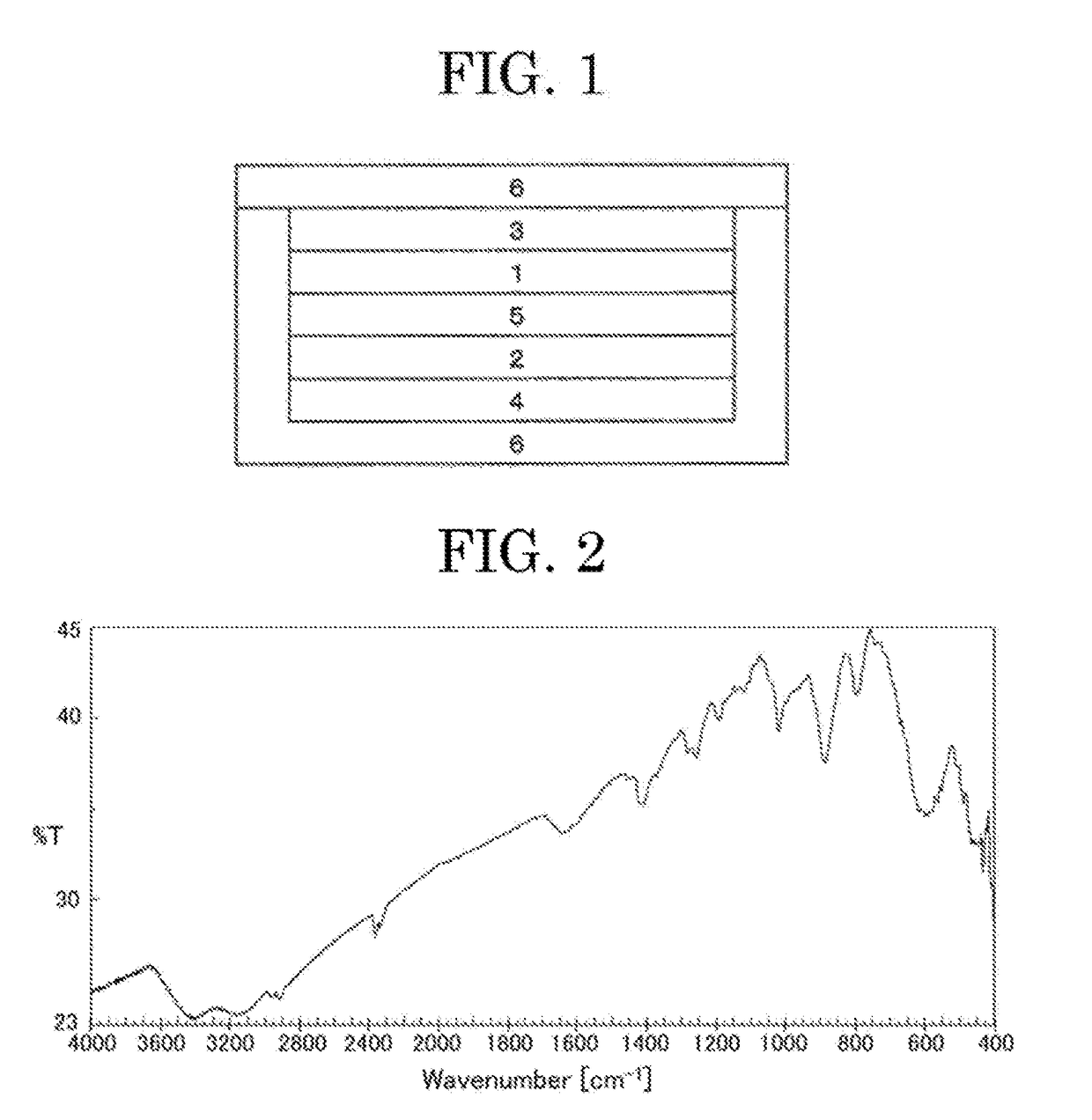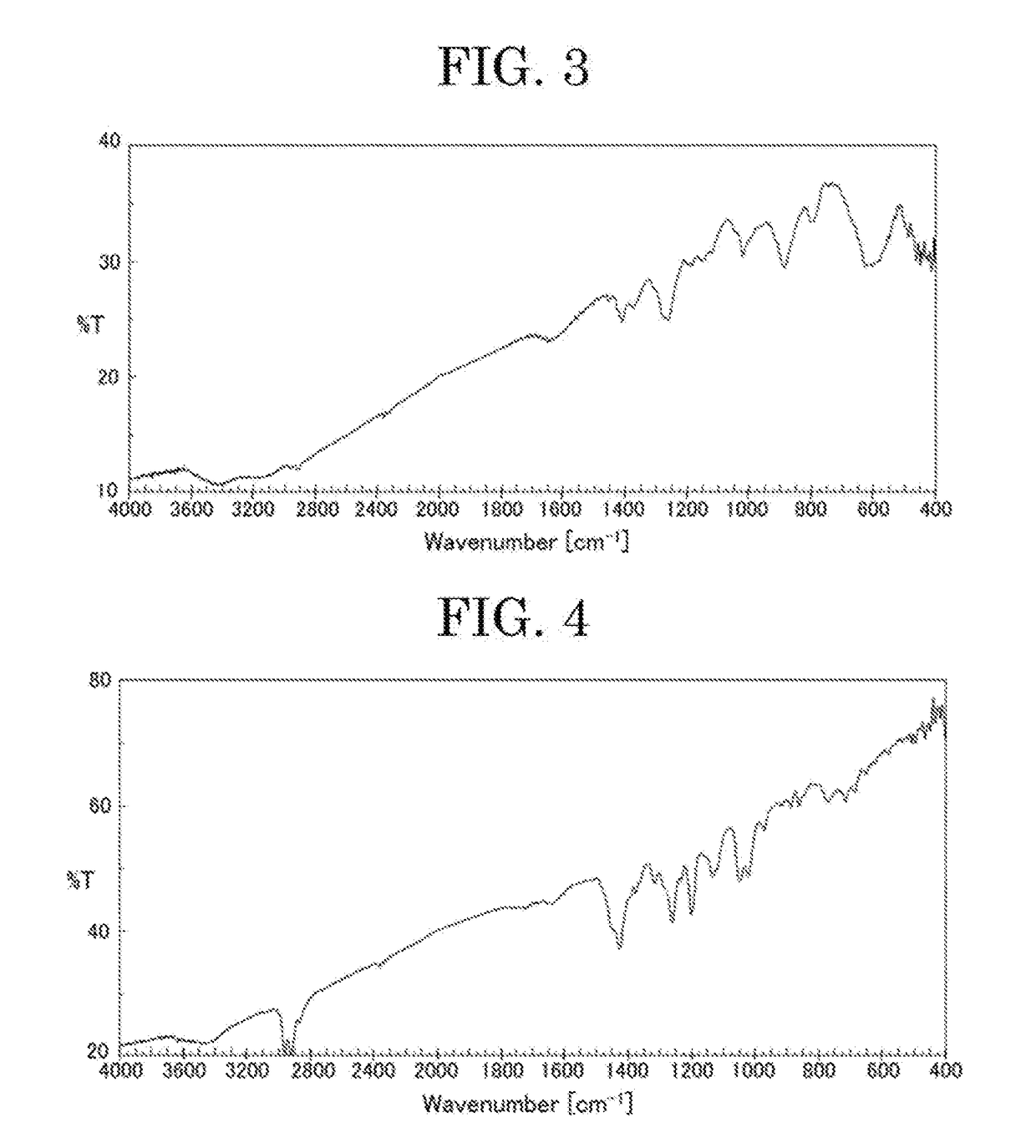Polythiophene derivative, method for producing same, positive electrode active material for secondary batteries, and secondary battery
- Summary
- Abstract
- Description
- Claims
- Application Information
AI Technical Summary
Benefits of technology
Problems solved by technology
Method used
Image
Examples
synthetic example 1
Synthesis of 3,4-bis[1-[(methylthio)methyl]thio]thiophene
[0061]
[0062]A 300 mL four-necked flask was charged with 0.23 g (1.2 mmol) of p-toluenesulfonic acid monohydrate (PTSA) and 70 mL of toluene. Under an Ar stream, the flask was equipped with a Dean and Stark strap and a condenser, and the content of the flask was dehydrated at reflux. After dehydration at reflux for 90 min, the flask was left to stand to cool. At the time point when the content of the flask was about room temperature, 2.4 g (16.6 mmol) of 3,4-dimethoxythiophene and 3.75 g (39.8 mmol) of methylthiomethanethiol were added to the flask. A bath temperature was adjusted so that an internal temperature of the flask was 90° C., and then a reaction was initiated. Completion of the reaction was checked by HPLC (product of Tosoh Corporation, PD-8020 high pressure gradient HPLC, column (product of GL Sciences Inc., ODS-3, 4.6 mm in diameter×250 mm), mobile layer (tetrahydrofuran / water=6 / 4 (v / v)), flow rate (1.0 mL / min)). T...
synthetic example 2
Synthesis of 3,4-bis[2-[(methylthio)ethyl]thio]thiophene
[0063]
[0064]A 500 mL four-necked flask was charged with 0.23 g (1.2 mmol) of p-toluenesulfonic acid monohydrate (PTSA) and 40 mL of toluene. Under an Ar stream, the flask was equipped with a Dean and Stark strap and a condenser, and the content of the flask was dehydrated at reflux. After dehydration at reflux for 90 min, the flask was left to stand to cool. At the time point when the content of the flask was about room temperature, 2.4 g (16.6 mmol) of 3,4-dimethoxythiophene and 15.6 g (166 mmol) of ethanedithiol were added to the flask. A bath temperature was adjusted so that an internal temperature of the flask was 90° C., and then a reaction was initiated. Completion of the reaction was checked by HPLC (product of Tosoh Corporation, PD-8020 high pressure gradient HPLC, column (product of GL Sciences Inc., ODS-3, 4.6 mm in diameter×250 mm), mobile layer (tetrahydrofuran / water=6 / 4 (v / v)), flow rate (1.0 mL / min)). Then, the co...
synthetic example 3
Synthesis of 3,4-bis[2-[(phenylthio)ethyl]thio]thiophene
[0065]
[0066]A 300 mL four-necked flask was charged with 0.23 g (1.2 mmol) of p-toluenesulfonic acid monohydrate (PTSA) and 70 mL of toluene. Under an Ar stream, the flask was equipped with a Dean and Stark strap and a condenser, and the content of the flask was dehydrated at reflux. After dehydration at reflux for 90 min, the flask was left to stand to cool. At the time point when the content of the flask was about room temperature, 2.4 g (16.6 mmol) of 3,4-dimethoxythiophene and 6.7 g (39.8 mmol) of phenylthioethanethiol were added to the flask. A bath temperature was adjusted so that an internal temperature of the flask was 90° C., and then a reaction was initiated. Completion of the reaction was checked by HPLC (product of Tosoh Corporation, PD-8020 high pressure gradient HPLC, column (product of GL Sciences Inc., ODS-3, 4.6 mm in diameter×250 mm), mobile layer (tetrahydrofuran / water=6 / 4 (v / v)), flow rate (1.0 mL / min)). Then...
PUM
 Login to View More
Login to View More Abstract
Description
Claims
Application Information
 Login to View More
Login to View More - R&D
- Intellectual Property
- Life Sciences
- Materials
- Tech Scout
- Unparalleled Data Quality
- Higher Quality Content
- 60% Fewer Hallucinations
Browse by: Latest US Patents, China's latest patents, Technical Efficacy Thesaurus, Application Domain, Technology Topic, Popular Technical Reports.
© 2025 PatSnap. All rights reserved.Legal|Privacy policy|Modern Slavery Act Transparency Statement|Sitemap|About US| Contact US: help@patsnap.com



